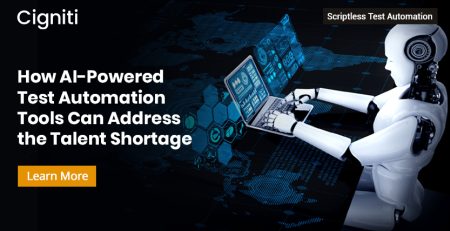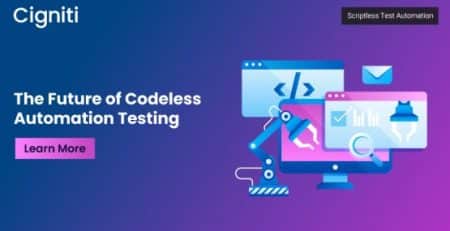How AI & Low-code are Revolutionizing Test Automation: Use Cases and Benefits
Have you tried Googling ‘ChatGPT’ recently? It has been live for only 45 days and the volume of conversations happening about and around ChatGPT is enormous. While ChatGPT is not the topic of this blog today, its popularity has offered a solid ground to talk about the pervasiveness of AI.
This is the era of Pervasive AI. We can anticipate the prevalence of AI similar to that of smartphones today. Use cases of AI are transcending vertical and global industries, intending to do things much faster and more efficiently than human beings. AI is powering low-code technologies and platforms that help organizations address the pertinent and perennial lack of availability of the desired skillset at scale. Software has been eating the world, but now AI is deciding the menu. However, irrespective of the sophistication of technology, testing remains essential for a successful release.
Traditional test automation is often seen as the domain of specialized engineers and developers, requiring significant expertise and technical knowledge to implement. But that is all changing with the advent of AI-led low-code scriptless test automation platforms. These platforms are making test automation more accessible and democratized, enabling teams to improve their testing processes and deliver better-quality software.
Testing for AI | AI for Testing
Ironic? Maybe.
Necessary? Absolutely.
By centering the focus on ‘Value at speed’, the dynamics of SDLC are shifting toward a quality-first, quality-led approach. Test Automation in DevOps and Agile facilitates faster releases and puts quality at the forefront by enabling the ‘shift everywhere’ strategy. At the same time, a few specific gaps have resulted in a lower success rate for test automation implementation.
- Scripting-based tools require specialized programming skills that are seldom available at scale
- Continuously evolving applications render existing test assets ineffective, thereby impacting the ROI
- Custom test frameworks are limited by a platform’s capability to support multiple technologies or platforms and thus pose scalability-related challenges
- Multiple stakeholders such as Functional test engineers, automation engineers, SDETs, and business users develop various test assets, which cannot be reused by others
Due to these gaps, the test automation assets developed through a scripting-based method are brittle and rigid to evolve with the application. Considering the speed at which the digital world moves, there is practically no time to invest hours into test maintenance, which further leads to huge technical debt and sub-optimal test coverage.
These are common barriers that hinder the implementation of successful, high-output test automation, birthing the need for scriptless test automation platforms.
Democratization of test automation
Scriptless test automation platforms address the aforementioned gaps, which justifies their rapidly broadening adoption. AI-powered scriptless test automation platforms are essentially democratizing the end-to-end process by reducing dependency on specialized skills. Low-code platforms make it easier for non-technical team members to build and maintain test scripts, execute test cases, and optimize test suites for better coverage.
The major AI use cases that scriptless test automation supports are:
- Democratized test designing: Using NLP & Intelligent screen recorders, the platforms leverage AI to visually capture user-application interactions and convert them into automation test scripts. NLP-based scripting can instantly convert manual test cases into automation scripts, accelerating the transition from manual to automation testing.
- Easy test maintenance & test suite optimization: AI detects application changes in real-time and automatically updates tests as an application evolves.
- Improved test accuracy: AI can automate the identification & analysis of false positives, improving the accuracy and mitigating the risk of incorrect results.
- Intelligent Object Location: AI allows automated tests to accurately identify and interact with the UI elements to be tested by locating them correctly.
- Accelerated debugging process: Smart debugger can analyze code, trace execution, or identify patterns that may indicate the presence of a defect.
- Auto healing: AI allows test cases to automatically adapt to the application changes and auto-heal test cases to ensure tests do not fail.
The Beginning
To reduce the cost of quality and derive higher ROI on test automation efforts, addressing the prevalent gaps through AI presents a promising opportunity. Although there is massive hype around AI’s capabilities, some of it is turning into reality.
To further delve into this topic, we are hosting a Digital Dialogue – Fireside Chat on ‘Democratize Test Automation with AI & Low-Code: Go Beyond the Hype’ on January 19th, 2023, with Dominique Raviart (Practice Director at NelsonHall), Melissa Tondi (Director of QE at Guild Education), and Rajesh Sarangapani (SVP of Innovation at Cigniti).
You can save your spot for the session by registering here.





Leave a Reply